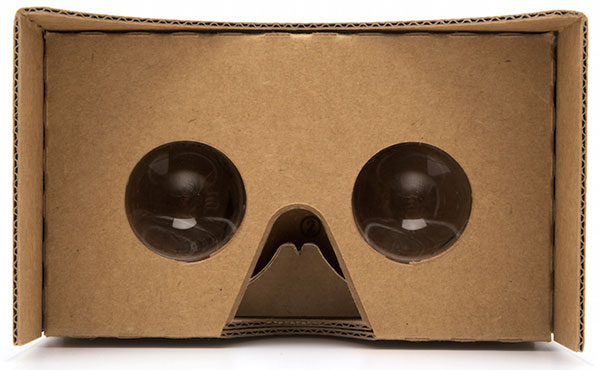Google on Thursday announced compatibility of its WebVR on Chrome with its low-cost Google Cardboard virtual reality system. It also launched WebVR Experiments, an online showcase for virtuality reality content in development.
WebVR became available on Daydream-ready phones earlier this year.
The newly launched WebVR Experiments are essentially proof-of-concept offerings — from simple VR games such as Konterball (ping pong) to The Musical Forest, which lets users around the world tap or click on objects to make sounds.
Chrome desktop support for virtual reality headsets such as Oculus Rift and HTC Vive is in development and will be available soon, Google said. In the meantime, those without a Cardboard or Daydream unit can view the WebVR Experiments in 2D on a desktop PC or a handset.
Google has invited users to submit their own projects, which could be featured in the WebVR gallery.
VR for the Mainstream
As VR is still very much a new — and arguably cutting-edge — technology, Google’s efforts appear to be aimed toward attracting a wider audience that may not be ready to spend big money to experience it yet.
“It isn’t as much about mainstream acceptance — it is simply about trying to scale mainstream awareness and exposure,” explained Paul Teich, principal analyst at Tirias Research.
“The sales cycle always starts with awareness, then moves to consideration,” he told TechNewsWorld.
“In this way, WebVR Experiments is the consumer friendly and social front-end to the fairly dry WebVR information site, as well as the work-in-progress deep-geek WebVR developer site,” added Teich.
Taking the Low Road
Instead of appealing to early adopters with expensive hardware promising the next big thing, Google’s is aiming to win over the masses via low-cost solutions.
“Google took what is an interesting approach to VR, and rather than going the high-end route showcased by HTC and Facebook — with Oculus Rift — they started at the other end with smartphones and a cheap headset,” said Rob Enderle, principal analyst at the Enderle Group.
Whether this strategy is the right one is yet to be determined.
“Google’s approach could get to volume, but the experience was low quality,” Enderle told TechNewsWorld, “while HTC and Facebook had better quality, but the price point kept them from critical mass — and the necessary tethers were dangerous.”
However, over time Google’s quality has improved and there has been a better focus to showcase the technology, while similar focus and improvement haven’t yet been seen from the higher-priced alternatives.
“As a result, Google’s side appears to be closer to success, and this latest step is another example of that progress,” added Enderle.
Seeing Is Believing
As with many forms of visual technology that have come before — notably HDTV — people have to see it to know what they might be missing. The issue is even more amplified with VR. Unlike higher-definition TV, which can be explained as something that “looks better,” VR is hard to explain if you haven’t seen it.
“The challenge for VR is that most online consumers have not been exposed to it yet. If they have heard of VR, they don’t know what it really is, and you certainly don’t have the urge to upgrade all of that as the capabilities and depth of experiences improve,” said Tirias Research’s Teich.
“If you don’t know what you’re missing out on, then you don’t have an urge to buy the equipment and rent the experiences and services,” he said.
This is why Google is ensuring that people both understand what VR is and — more importantly — can access it in its early days.
“The first task is to educate and show people what they are missing, so if consumers like what they see on a 2D display, they might buy a cheap Cardboard clone or knockoff with their current cheap smartphone,” suggested Teich.
“This is also about showcasing other people’s stuff, and what you can do in the sandbox to create VR experiences,” said Roger Kay, principal analyst at Endpoint Technologies Associates.
“The truth is that VR needs help; there has been a lot of hype, but it hasn’t taken off as quickly as its developers and supporters thought or hoped it would,” he told TechNewsWorld.
From Cardboard to Serious VR
Google’s bet is that if users like what they see through Cardboard, they might upgrade their smartphone and buy an $80 Daydream viewer, and so on.
“This is another prod in the direction of making VR more practical,” noted Kay.
“The point is that they start down the path for free, or nearly so, and then get hooked on the experience and content. WebVR is that first taste of fun and engaging content, with the very explicit message that there are already even more engaging ways to view it,” said Teich.
“This use of Web sources and related expanded developer support further increases the probability that their cellphone-based approach will [be] that one experience that will drive people to their platform before the high-end folks can solve their price, tether and content issues,” Enderle suggested. For Google, “this represents a solid — but not yet winning — step towards the finish line in this race.”





















































